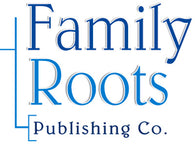
The German Element in St. Louis, A Translation from German of Ernst D. Kargau's St. Louis in Former Years: A Commemorative History of the German Element
The German Element in St. Louis, A Translation from German of Ernst D. Kargau's St. Louis in Former Years: A Commemorative History of the German Element; By Don Heinrich Tolzmann, ed. William G. Bek, tr.; x + 375 pp.; Paperback; Published: 1893, 1943; Reprinted: 2004; ISBN: 9780806349503; Item # CF9440D
As a result of the nineteenth-century German emigration to the United States, St. Louis, Missouri, along with Milwaukee and Cincinnati, would become constituted as the great "German triangle" of the Midwest. In 1893, Ernst Kargau, a reporter and editor for various German-American newspapers, published a German language commemorative history of St. Louis' German population entitled St. Louis in Former Years. Kargau's urban memoir constitutes one of the best snapshots we have of culture and society in a German-American community on the eve of World War I. In the 1940s, William Bek translated Kargau's book into English; however, Bek's translation lay in obscurity at the University of Missouri-Columbia for more than a half-century. Now, thanks to the efforts of Dr. Don Heinrich Tolzmann, who has secured the permission of the University and edited the Bek manuscript, we are able to make Kargau's excellent history widely available under the new title The German Element in St. Louis.
The Kargau opus is divided into three parts. The first of these, which is divided into twenty chapters, represents a veritable walking tour of German St. Louis, from Main Street to South Seventh Street. Here we encounter, street-by-street, the edifices and some of the personalities--the brewers, the politicians, the ministers, etc.--whose energies were at the heart of turn-of-the century St. Louis. Part II is concerned with German-American life and institutions. Representative chapters treat German music and theater, religious denominations, the Turner societies, and the important German Immigration Society of St. Louis. The focus of the final section of the book is upon business and industry. In addition to sections concerned with river commerce, street railways, and mail service, Kargau has included a lengthy section on German-owned businesses in brewing, lumber, baking, chemical, and other industries. For the convenience of the reader, the editor has added a selective bibliography for further reading and a name index with over 3,500 entries pertaining to German-Americans mentioned in the book.
